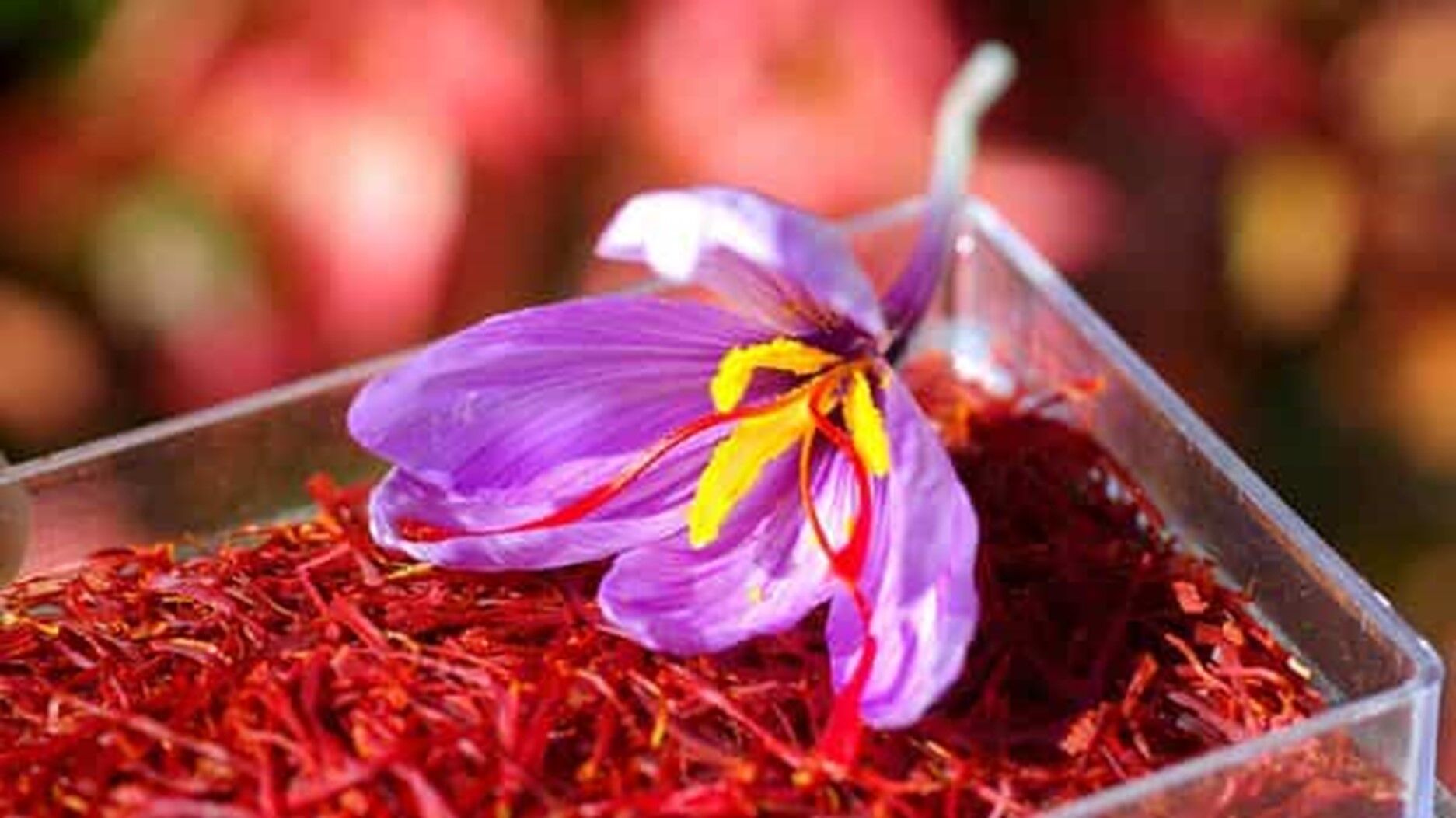Kashmiri saffron: A deluxe spice
The GI tag for Kashmiri saffron has standardised the entire process — from production and processing to marketing — thereby removing the glitches and ensuring better and more yields

At Rs 3 lakh per kg, the saffron grown in the Pampore region on the outskirts of Srinagar in Kashmir is one of the world's most expensive agricultural commodities. In July 2020, owing to the efforts of the administration of the Agriculture Department of the UT of J&K, it received the GI tag on the lines of Darjeeling tea and the Basmati rice of the Gangetic belt.
An offering to the Buddha
There are several theories about the arrival of saffron in Kashmir. Kashmiri and Chinese accounts date its arrival anywhere between 2,500 to 900 years ago. Historians studying ancient Persian records date the arrival to some time prior to 500 BC. Other sources suggest that saffron came to China with Mongol invaders from Persia. But the antiquity of saffron is also mentioned in ancient Chinese and Tibetan texts, including the 40-volume 'Shennong Bencaojing' written around 300-200 BC. Writing in the third century of the first millennium, Wan Zhen said with great authority that 'the habitat of saffron is in Kashmir, where people grow it principally to offer it to the Buddha'.
The Persian origin of the crop is not in doubt, especially as Iran continues to be the world's largest producer of the crop. However, in terms of quality, it is not a patch on the saffron produced in Kashmir, perhaps because of the unique agro-clime in which it is grown. Kashmir saffron is the only saffron in the world grown at an altitude of 1,600-1,800 m AMSL (above mean sea level), which adds to its uniqueness and differentiates it from other saffron varieties available the world over. Saffron is cultivated by more than 16,000 families located in 226 villages, the majority of whom have holdings of less than half a hectare. Unsorted corms of different grades are used for fresh plantation. The corms are not uprooted, except when new planting is done to use the daughter corms as seed material. Water is a critical factor for production since Saffron is a rainfed crop of Karewas (highlands) where irrigation sources are generally not available.
However, on account of changing climatic conditions, increasing urbanisation, alternate employment options, and issues regarding adulteration and branding, saffron saw a steep decline from about 16 metric tonnes per annum in 1996 to 5.6 metric tonnes in 2018. Likewise, the acreage shrank from 5,700 hectares to 3,700 hectares during the period. Besides, the yields registered a sharp decline from 3.13 kg per hectare to 2.5 kg per hectare. On the other hand, thanks to the growing popularity of Indian cuisine, and increasing incomes, the demand of Kashmir saffron has been growing, thereby creating a perverse incentive for middlemen and brand owners to soak strands in glycerine to increase its weight, adulterate the saffron with finely shredded pomegranate peels, and mix it with the inferior quality Iranian saffron.
National Saffron Mission
Concerted efforts to intervene in the production ecosystem was made by the National Saffron Mission in 2010. The Mission was funded by the GoI and implemented by the Agriculture Department of J&K. The objectives included area expansion, quality enhancement, funding interventions for research and extension capabilities through the Sher-e-Kashmir Agriculture University and, last but not the least, an appropriate system for organised marketing, quality-based pricing of saffron and for facilitating direct transactions between growers, traders, exporters, and industrial agencies. One of the main concerns was that of productivity. The Mission felt that the extant cultivation practices and poor irrigation techniques were responsible for Kashmir saffron not being competitive in terms of production. In Iran and Spain, farmers adopted the sprinkler technology and pluriannual method of cultivation, under which Saffron plants were left in the soil for two consecutive years and then the corms were removed from the field for fresh plantation. Assistance is now available for both macro- and micro-irrigation to ensure that the cultivators get the necessary assistance for all technical inputs.
A complete value chain
Post the GI tag, interventions to create a complete value chain for saffron have begun in the right earnest. Traditionally, after plucking of flowers, the stigmas were separated by family labour, and sun drying resulted in sharp degeneration in quality — leading to non-standard products because of poor post-harvest handling practices, lack of proper infrastructural facilities, and packing of dried product in poly bags stored under room temperature by the farmers. The establishment of a spice park in the valley will ensure that the bulk of saffron produced in Kashmir is sorted, graded, weighed, dried, packaged, branded, and marketed from Srinagar itself. As an industry insider put it 'For customers, the GI tag creates the same distinction as between a branded and a non-branded product. It assures people of provenance. Together with the setting up of a spice park in the valley, it creates a win-win situation for the industry.'
Views expressed are personal



